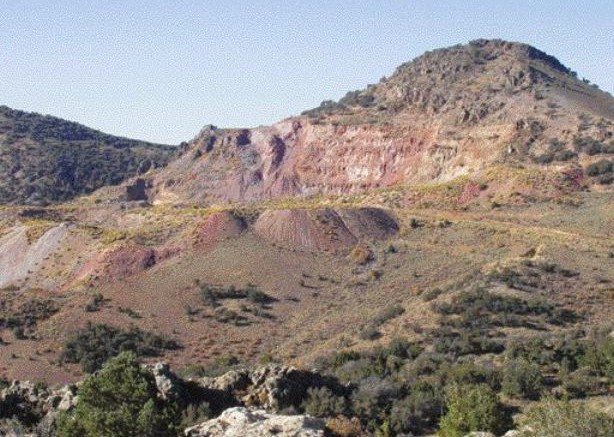Vancouver — Aiming to prove that the best place to look for a new mine is near an old one, Staccato Gold Resources (CAT-V, STCGF-O) set out four years ago to acquire a large land position in Nevada, a U.S. state that accounts for 9% of the world’s gold production.
Having achieved that goal, the Vancouver-based junior is drilling a 71-sq.-km property in north-central Nevada, about 13 km south of Eureka on the Cortez Trend. The hope is that the company can find enough gold around one of five former open-pit mines on its South Eureka property to attract the interest of a major mining firm.
“There is an old saying in the business that you go where the gold is,” said Greg Hryhorchuk, Staccato’s chief financial officer.
A former magazine advertising salesman, Hryhorchuk launched the company in 2003, with help from president Robert Lipsett, a Vancouver venture capital financier with experience in mining and oil and gas.
After missing out on the dot-com boom in the late 1990s, they set about assembling a property position with the help of Staccato director Donald Decker, and Carl Pescio, the largest private holder of mining claims in Nevada, behind Newmont Mining (nmc-t, nem-n) and Barrick Gold (ABX-T, ABX-N).
Backed by a technical report by Staccato’s exploration manager Richard Russell, the company is targeting an area on South Eureka known as Lookout Mountain, which generated 17,700 oz. gold (grading 0.12 oz. per tonne) in 1987-1988.
The former open-pit mine and surrounding area is estimated to contain a measured, indicated and inferred resource of 881,000 oz. gold in a surface oxide and deeper sulphide zones.
Gold in oxides can be recovered through low-cost heap-leach methods, whereas the richer sulphide material must be shipped out and processed using more costly roasting or autoclave techniques.
As the average grade of that material ranges from 0.01 oz. to 0.04 oz. gold per tonne, the company is hoping to increase the resource estimate to around 1 million oz. gold by finding higher-grade pods in deeper sulphide zones beneath, and in the vicinity of the open pit.
“It is the view of the entire team that we will be able to get there fairly easily,” Hryhorchuk says.
The company achieved some initial success in December 2005 when it released the first two holes of a 3-hole, 3,000-ft. program, which was designed to examine the geologic framework in both oxide and sulphide zones at the Lookout pit.
Core hole BH-05-03 intersected 3 ft. of 2.25 oz. gold (from 193 ft. depth) and 80 ft. of 0.21 oz. (from 380 ft.). Core hole BH-05-02 intersected 10 ft. of 0.17 oz. gold (from 265 ft.) and 25 ft. of 0.2 oz. (from 425 ft.).
The stock reacted by rising steadily to around $1.50 on the TSX Venture Exchange in February 2006 from under 20, before the results were released. It has since slipped back to around 70.
Hryhorchuk says the company has spent about US$2 million so far to drill 20 holes. Having recently secured permits to drill as many as 37 new holes, the company launched a 12-hole program (3,050 to 3,660 metres) in mid-January, which is expected to cost another $1 million to complete.
The objective is to continue to define new gold resources, this time along a significant segment of the Ratto Ridge fault system south of the Lookout Mountain pit.
“We are trying to add ounces as efficiently as we can and get that deposit to a size that will attract one of the majors,” Hryhorchuk says.
Nevada produced 6.8 million oz. gold from 28 mines in 2005 (the latest year for which figures are available), according to the Nevada Bureau of Mines and Geology. That metal was valued at US$3 billion.
However, one Vancouver-based mining analyst says Staccato’s stock price has slipped back to 70 because investors are not yet convinced that the junior can find enough gold to making mining feasible.
“People are still sitting on the fence trying to decide whether this is a win or not,” says Dorothy Atkinson, a mining analyst with Bolder Investment Partners.
She says the company is working in the right area, about 7.2 km south of Barrick Gold’s Archimedes gold mine, which is set to go into production this year. However, Atkinson says the company is facing the challenge of complex geology.
In his 2005 report, Russell said the biggest impediment to the understanding of the geology and structure of any area in north-central Nevada is the confusing nature of the stratigraphy as originally defined by many earlier workers. Stratigraphy refers to the sequence of bedded rocks in a particular area.
“It’s a big property and the high-grade targets are rather small,” says geologist Dave Mathewson, who is acting as a consultant to Staccato. “It takes a lot of drilling to find them. Once you find them, it is anybody’s guess as to where they go.”
Still other observers say Staccato is working in the right terrain.
“The common perception is that most of the shallow oxide resources were discovered and mined in the 1980s and 1990s,” says Vince Borg, a spokesman for Barrick Gold. “As a result, there has been a shift to explore primarily for deeper sulphide resources.”
However, Barrick’s discoveries at Cortez Hills in 2002 and South Arturo in 2005 are an indication that there are still undiscovered oxide deposits, Borg says.
Staccato is trying to increase confidence in what it has discovered so far by hiring Mine Development Associates of Reno, Nev., to complete a scoping study that will look at the economics of operating a mine on the property. Results are expected within two months.
South Eureka is one of Staccato’s five gold exploration projects in northeastern Nevada. The other four will remain on the back burner for now.
“As a small junior, we are not capable of getting to them right now,” Hryhorchuk says.


Be the first to comment on "Staccato eyeing Eureka gold"